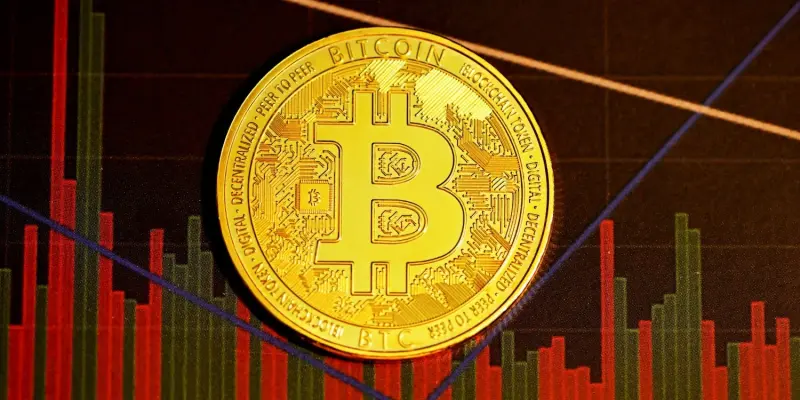Recent developments in U.S.-China trade relations have reverberated through global financial markets, sparking renewed optimism around Bitcoin’s future. Both nations have temporarily reduced tariffs on each other’s goods, with the U.S. cutting tariffs from 145% to 30% and China from 125% to 10%. This shift has already propelled Bitcoin’s price past $105,000, offering a glimpse into the potential for further growth that might see the cryptocurrency surpass its previous high of $109,350. The easing of tariffs could be crucial, as it might alleviate inflationary pressures, particularly the anticipated consumer price index (CPI) data soon to be released. Analysts forecast a moderate easing, with CPI expected to show a decline to 2.3% year-on-year from 2.4% the previous month. Such economic indicators could influence the Federal Reserve’s approach to monetary policy decisions regarding interest rate adjustments, fostering a conducive environment for Bitcoin’s escalation.
Impact of Tariff Reductions on Cryptocurrency Markets
The easing of trade tensions between the U.S. and China has injected optimism into the cryptocurrency markets, with Bitcoin witnessing a significant recovery from its earlier slump. From a low of $75,000 in April, Bitcoin has surged to $105,500—an impressive rebound reflecting robust market sentiment. This uptrend is bolstered by substantial inflows into spot exchange-traded funds (ETFs), such as BlackRock’s IBIT, which reported net inflows exceeding $5 billion over 20 consecutive trading days. This renewed interest aligns with the Federal Reserve’s dovish stance on mitigating inflationary pressures. Remarks from Chairman Jerome Powell underscore the temporary nature of tariff-related inflationary impacts, providing a buoyant foundation for Bitcoin’s sustained price trajectory.
Moreover, broader economic dynamics appear favorable for Bitcoin’s consolidation within the $105,000–$115,000 range, with analysts suggesting potential breakout scenarios if yields remain below 4.8%. Notably, other digital currencies have similarly experienced gains. Ethereum surged by 39% to $2,500, marking its best performance since late 2020. Meanwhile, XRP, DOGE, ADA, and SOL all recorded substantial increases. Despite these gains, market stability appears intact due to the absence of speculative frenzy, characterized by Bitcoin’s modest implied volatility and subdued CME futures open interest, which remains below its peak during the 2020 Trump election period.
Potential Outcomes and Market Implications
The recent tariff adjustments, coupled with anticipated CPI data, have bolstered Bitcoin’s potential to reach new price highs, which may have broader implications for the cryptocurrency landscape. If inflationary pressures continue to moderate as predicted, the Federal Reserve might pursue a dovish monetary policy, possibly leaning towards interest rate cuts. Such an environment would likely strengthen Bitcoin’s market position, attracting increased investor interest and encouraging a bullish market sentiment. While optimism in Bitcoin’s future persists, it is crucial to remain cognizant of other market dynamics that could influence its ascent. ETF inflows have been pivotal in supporting recent recovery efforts; however, geopolitical developments and broader economic data will continue to play a significant role in shaping both currency valuation and investor sentiment. Furthermore, the performance of other digital assets may reinforce Bitcoin’s position or alternatively introduce competing pressures, leading to varying outcomes in the cryptocurrency landscape. In examining potential futures for Bitcoin, it is essential to consider the interplay between geopolitical developments and market anticipation. Analysts remain cautiously optimistic, suggesting that while a breakout could occur within the current trading range, a sustained rally would require continued adherence to favorable conditions, including stable yields and consistent ETF inflows. As the economic environment evolves, strategic investor positioning will be key in navigating potential volatility and maximizing returns, thus highlighting the ongoing resilience and adaptability inherent in the cryptocurrency market.
Future Considerations for Bitcoin and the Cryptocurrency Market
The easing of U.S.-China trade tensions has revitalized cryptocurrency markets, with Bitcoin bouncing back strongly from its prior decline. Once hitting a low of $75,000 in April, Bitcoin has rallied to $105,500, demonstrating positive market sentiment. This upward movement is supported by significant capital inflow into spot exchange-traded funds (ETFs) like BlackRock’s IBIT, which saw over $5 billion in net inflows for 20 straight trading days. This revived interest coincides with the Federal Reserve’s stance on managing inflation. Chairman Jerome Powell’s comments highlight tariffs’ temporary influence on inflation, laying a strong basis for Bitcoin’s continuous upward trend.
Economic conditions seem favorable for Bitcoin’s stability within the $105,000–$115,000 range, with analysts predicting further gains if yields stay under 4.8%. Other digital currencies like Ethereum, XRP, DOGE, ADA, and SOL have also shown growth, with Ethereum rising 39% to $2,500, its highest since late 2020. Despite these increases, the market remains steady due to the lack of excessive speculation, evidenced by Bitcoin’s relatively low implied volatility and subdued CME futures interest, lower than its peak during the 2020 Trump election.

